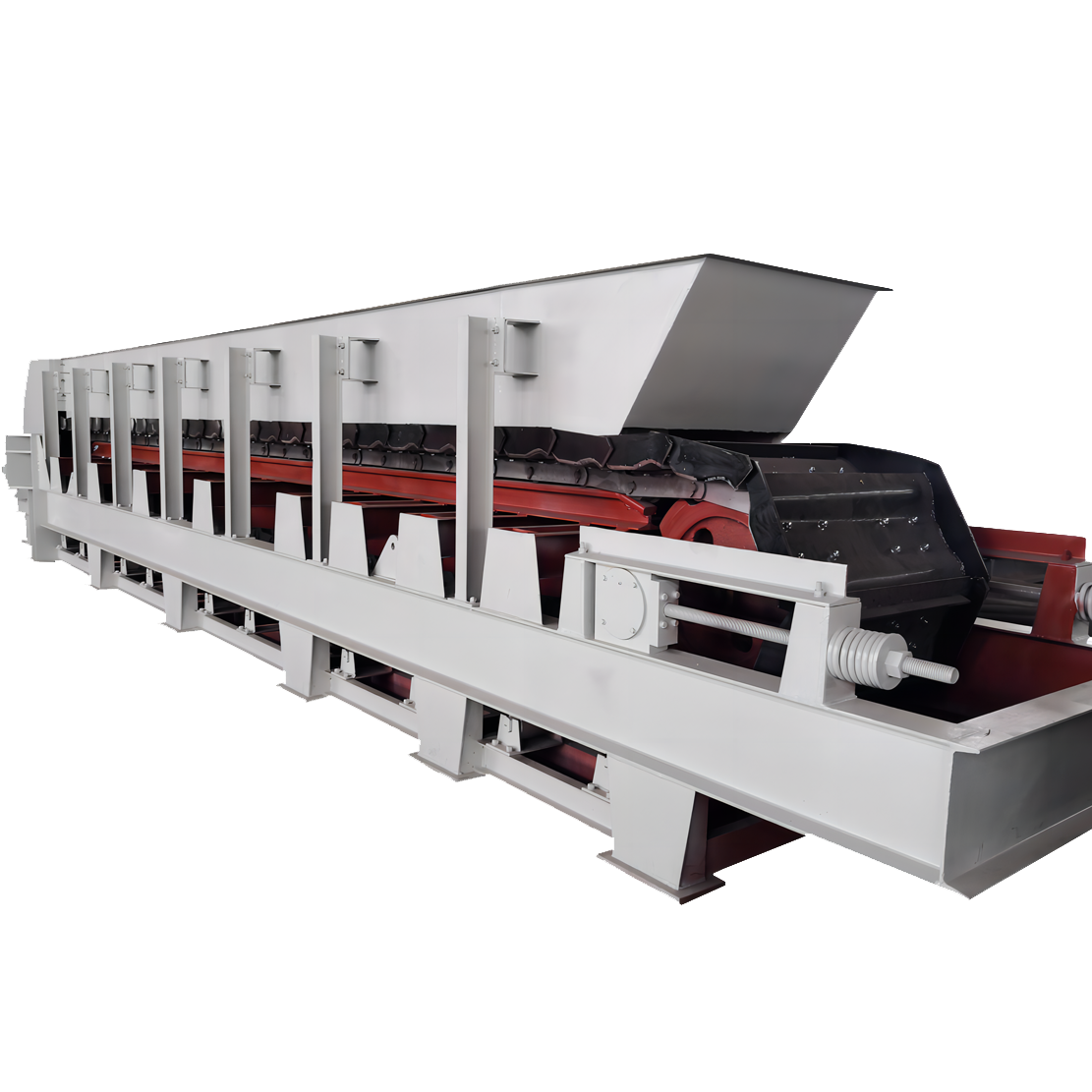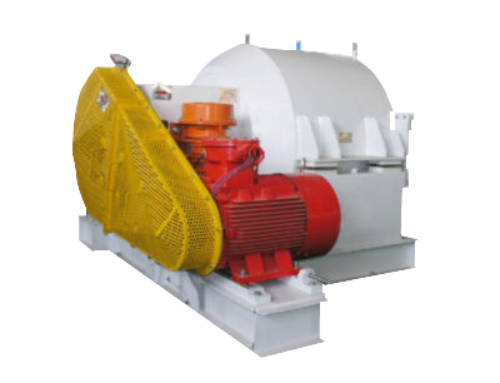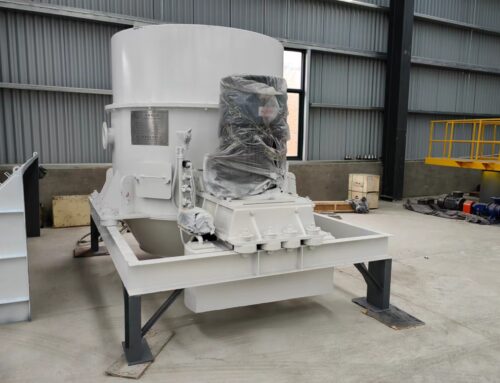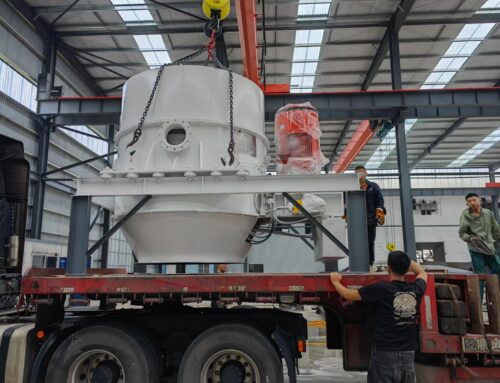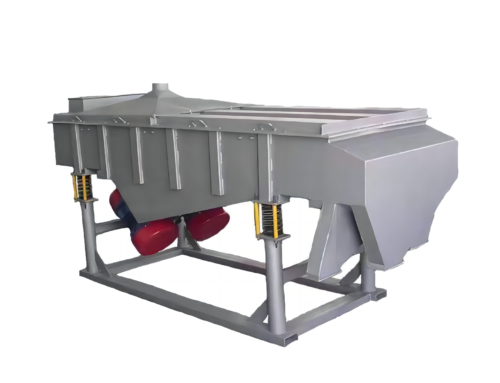In the grand stage of modern industrial production, vibrating feeder with its unique working principle and excellent performance, plays an indispensable role. It is like a tireless “porter”, accurate and efficient to complete the task of material transport, for the smooth operation of the production process provides a solid guarantee.
Vibrating feeders, as the name suggests, are used to achieve material feeding operations by means of vibration. Its working principle is based on the force of mechanical vibration, which produces periodic vibration through the exciter, so that the material in the trough moves in a specific direction under the action of inertia force. This kind of vibration can not only ensure the even conveying of materials, but also effectively avoid the blockage and accumulation of materials, thus greatly improving the production efficiency.
Working Principle of Vibrating Machine
The working principle of vibrating feeder is mainly based on mechanical vibration.
Usually, the vibrating feeder consists of shaker, trough, spring support and transmission device.
The chute is the main body of the material, and its shape and size are designed according to different material characteristics and conveying requirements. The shaker is the core component to generate vibration, which provides constant power for the trough through the rotation of the eccentric block or the action of electromagnetic force. The spring support plays the role of buffer and support, which can reduce the impact of vibration on the foundation of the equipment and ensure the stable operation of the equipment. The transmission device is responsible for transferring power to the shaker to ensure its normal operation.
The exciter is the core component of vibration, which generates periodic excitation force through the rotary movement of eccentric block or the action of electromagnetic force. When the excitation force is applied to the trough, the trough will vibrate under the action of the excitation force.
In the vibration process, the material placed in the trough will be subject to inertia, friction and gravity of the combined effect. Due to the periodicity and directionality of vibration, the material will move in a specific direction, thus achieving the purpose of feeding.
The movement state of the material in the trough can be divided into throwing movement and gliding movement. In the throwing motion stage, the material is thrown up and jumps forward; in the gliding motion stage, the material slides along the surface of the trough. By reasonably adjusting the parameters of the shaker and the structure of the trough, the conveying speed and volume of the material can be controlled to achieve uniform and stable feeding.
Advantages of Vibratory Feeders
Vibrating feeder has many significant advantages. Firstly, it can realise continuous and even feeding, thus ensuring the stability of the production process and the consistency of product quality. Secondly, it has a large feeding capacity and adjustment range, can meet the needs of different scale production. In addition, the vibrating feeder has a simple structure, easy maintenance and operation, and relatively low operating costs. Moreover, it can adapt to various harsh working environments, such as high temperature, high humidity, dusty, etc., with strong reliability and durability.
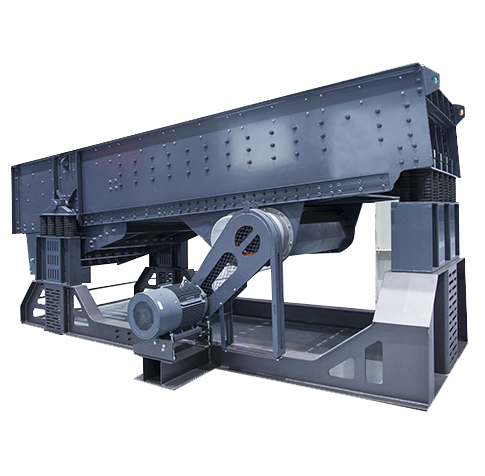
Practical applications of vibratory feeders
In practical application, vibrating feeder is widely used in many fields such as mining, metallurgy, building materials, chemical industry, electric power and so on. In mining, it can convey the ore from the silo to the crusher for crushing; in metallurgy, it is used to feed the raw materials evenly into the furnace; in the production of building materials, it can provide a stable supply of materials for the mill; in the field of chemical industry, it ensures the accurate dosage of all kinds of chemical raw materials; and in the electric power industry, it conveys the coal and other fuels for the boiler.
When using a vibratory feeder, here are some things to keep in mind:
1.Installation and debugging: make sure the equipment is installed firmly and horizontally, the ground bolts are tight, and there is no loosening in each connection part. When debugging, adjust the excitation force, amplitude and other parameters according to the instructions of the equipment, in order to achieve the best feeding effect.
2.Material characteristics: understand the nature of the conveyed materials, such as particle size, humidity, viscosity, etc. Avoid conveying too wet, sticky materials. Avoid conveying materials that are too wet, sticky or too large particles, so as not to cause blockage or affect the feeding accuracy.
3.Load control: Do not exceed the rated load of the equipment to prevent the equipment from overloading operation, resulting in component damage and failure.
4.Lubrication and maintenance: Regularly lubricate the transmission parts and bearings of the equipment to ensure its normal operation and reduce wear and tear.
5.Inspection and Maintenance: Regularly check the working condition of the shaker, spring, trough and other parts, and repair or replace them in time if they are found to be worn, cracked or loose.
6.cleanliness and hygiene: keep the equipment and the surrounding environment clean, prevent the accumulation of materials and impurities into the equipment, affecting the working performance.
7.Electrical safety: Ensure the normal operation of the electrical system to prevent leakage, short circuit and other electrical failures, to ensure the safety of the operator.
8.Operation specification: the operator should be familiar with the operating procedures of the equipment to avoid wrong operation leading to equipment damage or accidents.
9.Stopping treatment: When stopping the machine, stop feeding the material first, and then shut down the equipment after the material conveying is finished, so as to avoid blockage caused by material residue.
10.Environmental factors: Consider the temperature, humidity, dust and other factors of the working environment of the equipment, and take corresponding protective measures to prolong the service life of the equipment.
In the use of vibrating feeder, selecting the appropriate excitation force and amplitude need to consider a number of factors, the following are some key considerations and methods:
1.Material characteristics
Material size: finer materials usually require smaller excitation force and amplitude to avoid over-throwing resulting in material dispersion. Larger materials may require greater force and amplitude to facilitate movement.
Specific gravity of the material: materials with larger specific gravity generally require stronger excitation force to overcome the effect of gravity and achieve effective conveying.
Humidity and viscosity of materials: wet or sticky materials may need a larger amplitude to prevent clogging, while the excitation force also needs to be adjusted to ensure the smooth flow of materials.
2.Requirement of feeding volume
If a larger feeding volume is required, it is usually necessary to increase the excitation force and amplitude in order to increase the conveying speed and flow rate of the material.
On the contrary, a smaller feeding volume corresponds to a smaller excitation force and amplitude.
3.Chute structure and dimensions
The length, width and angle of inclination of the chute affect the flow characteristics of the material. Longer, wider or more steeply inclined chutes may require higher excitation force and amplitude.
Chute material and surface roughness will also have an impact on the material friction coefficient, which indirectly affects the choice of excitation force and amplitude.
4.Equipment installation location and working environment
If the vibrating feeder is installed in a high place or on an unstable foundation, the excessive excitation force and amplitude may lead to equipment instability or safety hazards, at this time a relatively small value should be selected.
The temperature, humidity, dust and other factors in the working environment may also affect the performance of the equipment, which in turn affects the choice of excitation force and amplitude.
5.Test and commissioning
In practice, the best excitation force and amplitude can be determined through testing and commissioning. Start with a smaller value, gradually increase, observe the material conveying situation, including feeding speed, uniformity, whether clogging, etc., until a satisfactory result is achieved.
6.Refer to equipment manuals and manufacturers’ recommendations
Equipment manufacturers usually provide some reference data and suggestions according to the design characteristics of the equipment and common application scenarios, which can be used as the basis for the initial selection, but still need to be adjusted according to the actual situation.
In summary, the selection of the appropriate excitation force and amplitude needs to take into account the characteristics of the material, feeding requirements, trough structure, installation environment and other factors, and through the test and debugging to optimize the determination, in order to achieve efficient and stable operation of the vibrating feeder.
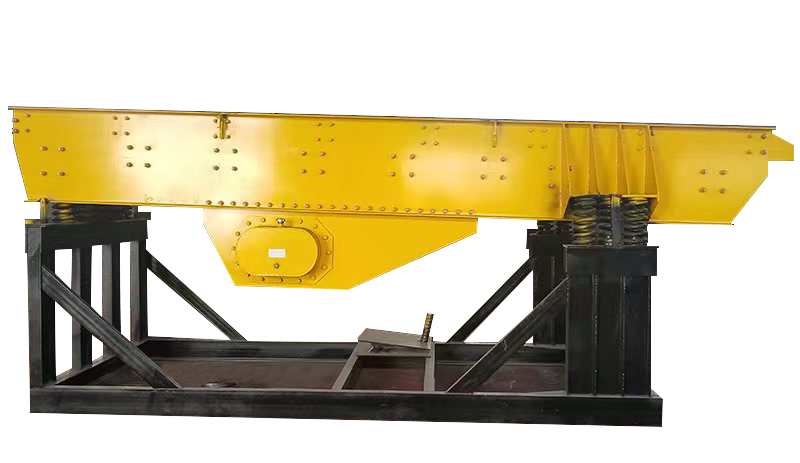
The excitation force and amplitude have a significant effect on the conveying efficiency of the vibrating feeder.
The size of the excitation force is directly related to the driving force of the vibrating feeder. When the excitation force increases:
1.It can provide a stronger driving force, so that the material is easier to overcome the friction and gravity, thus speeding up the movement of the material and improving the conveying efficiency.
2.It can handle heavier, larger particles or sticky materials, increasing the adaptability of the equipment to different materials.
The change of amplitude will also have an important effect on the conveying efficiency.
1. Larger amplitude can make the material in the trough to get more throwing distance and higher jump height. This helps the material to loosen and separate better and reduces sticking and clogging between materials, thus improving conveying smoothness and efficiency.
2.However, too large an amplitude may lead to excessive dispersion of materials or even jump out of the trough, which in turn reduces conveying efficiency. On the contrary, too small amplitude may not be able to make the material move sufficiently, resulting in accumulation and blockage, which will also reduce the conveying efficiency.
In summary, the excitation force and amplitude need to be reasonably matched and adjusted to adapt to different material characteristics and conveying requirements, so as to achieve the best conveying efficiency of the vibrating feeder.
With the continuous progress of science and technology, vibrating feeder is also in constant innovation and development. The new vibrating feeder adopts advanced control technology and intelligent system, which can realise remote monitoring and automatic operation, and further improve the production efficiency and management level. At the same time, in terms of energy saving and environmental protection has also achieved remarkable results, through the optimisation of design and the use of efficient drive systems, reducing energy consumption and noise pollution.
In short, vibrating feeder as an important equipment in industrial production, with its unique advantages and continuous innovation of technology, for the development of various industries to inject a strong impetus. In the future industrial process, it will continue to play an irreplaceable role in promoting the improvement of production efficiency and industrial upgrading.

